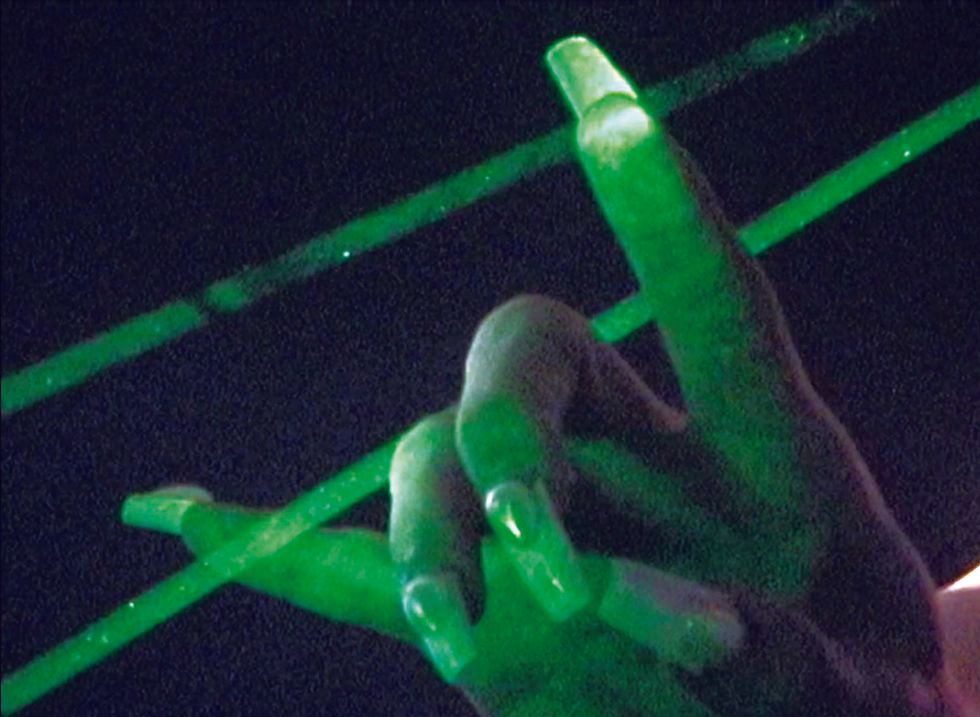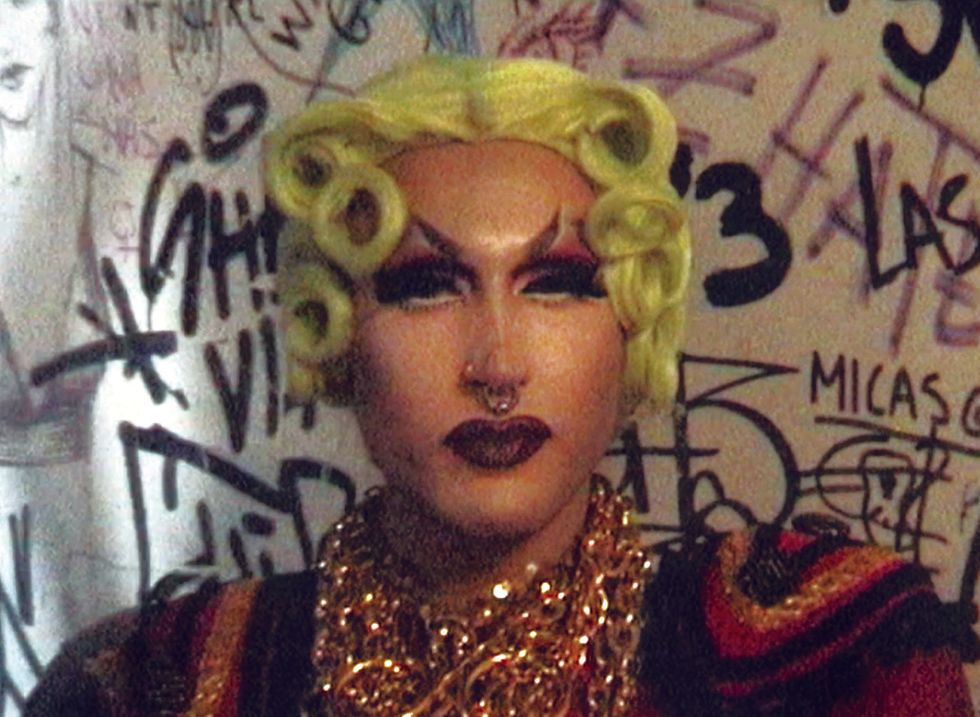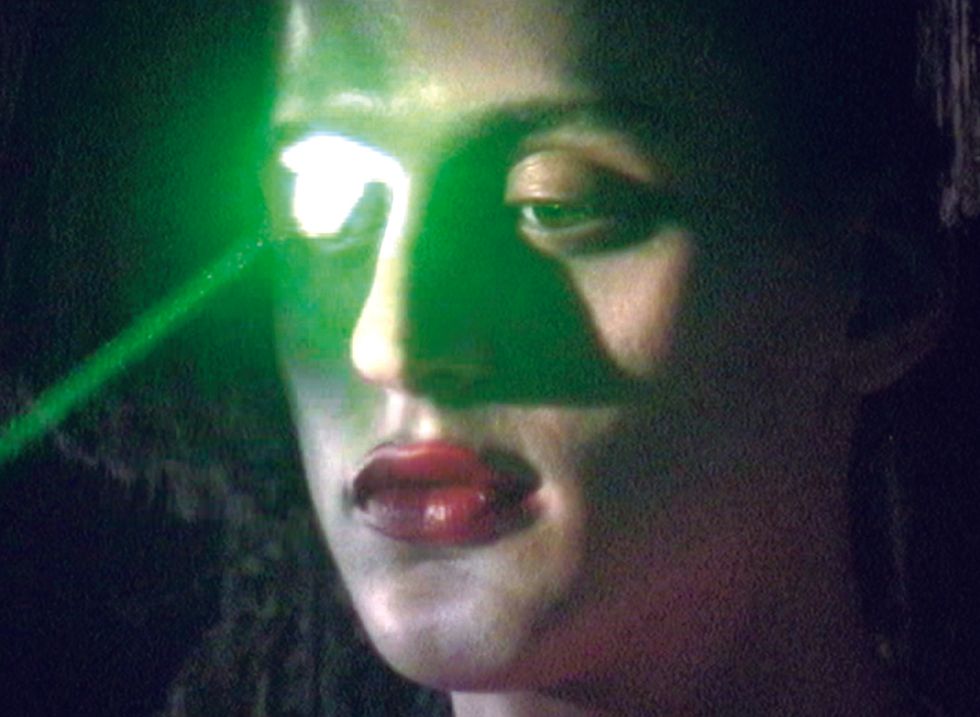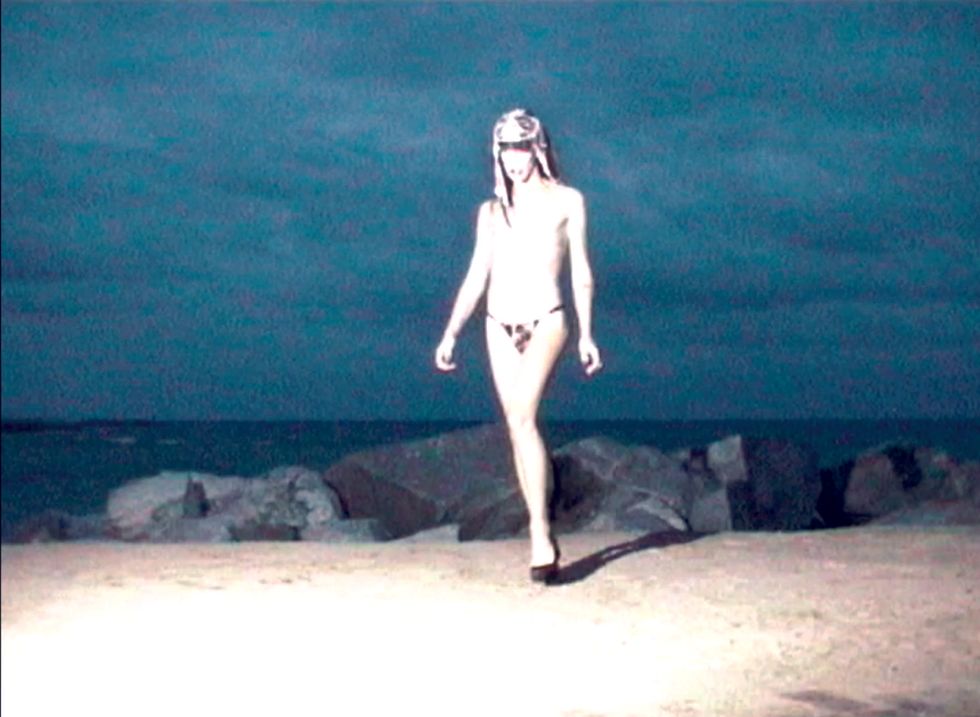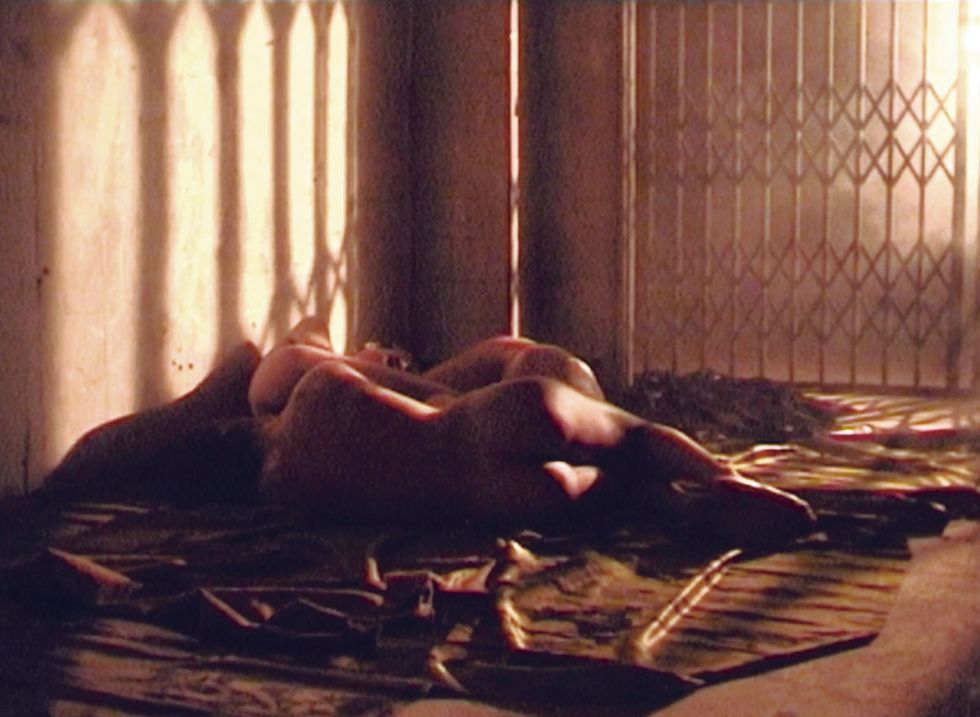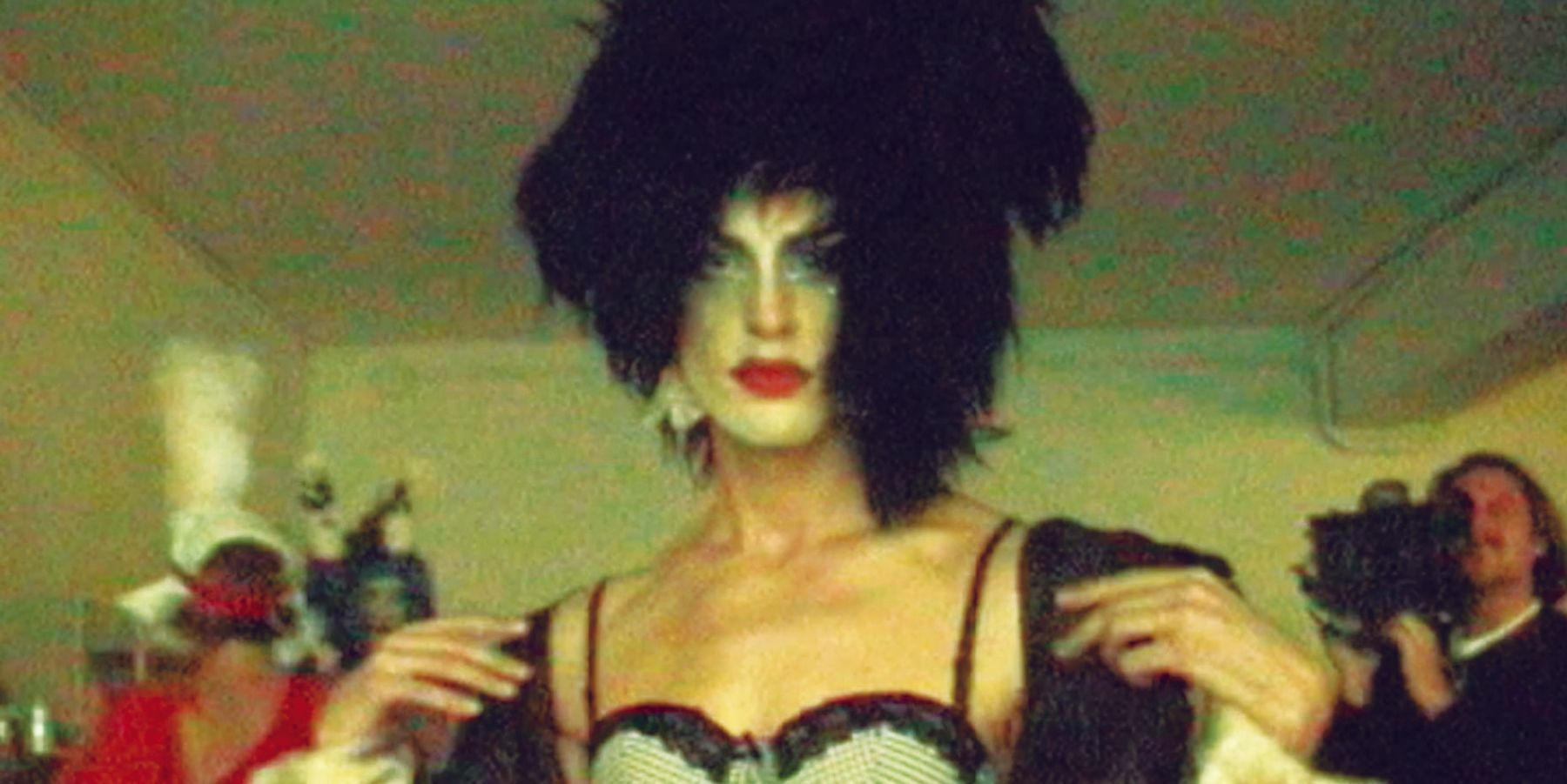
A queer Barcelona-based visual artist working across photography and video, Leo Adef relies on cameras as the key to self-discovery. Exploring relationships, sexuality and intimacy through evocative and torrid imagery, Adef has developed a documentary practice suspended between dream and reality.
WARP, Adef's first self-published photo book, reveals a relationship between the broader LGBTQ+ community and the photographer's own enduring search for identity. Adef's debut into the publishing world includes photos spanning over the past four years, portraying over 100 encounters with different queer people from many walks of life.
Related | Arca: Embracing the Flux
Through video footage and still photography, the visual artist succeeds in telling both a personal and social story. "This book captures all these moments and the people that, just by being who they are, have taught me much more than what they are aware of and inspired me to immortalize them in this publication," reads the book's introduction.
Below, Adef talks documentary practice, the importance of demanding adequate representation for the queer community and the personal journey that led to WARP.
For those who might not know you, could you tell us something about yourself?
My name is Leo, I was born in Buenos Aires, Argentina and I've lived in Barcelona since 2013. For the last 10 years, I've worked as a photographer and director using my cameras as a tool to get to know inspiring people and their stories. My work touches upon different ideas and emotions mutating as I grow, deconstruct, and learn from those I meet along the way. I consider myself a queer person and I'm constantly learning from my community.
Where does your desire to document the queer scene stem from?
Ever since I was a kid, I've always carried a video camera with me. At the beginning, it was just for fun, but during my teenage years I realized that I could use it to connect with others and explore things that I wouldn't otherwise let myself explore. Four years ago, I was quite lost: the vibe of the city was different from now, and I just couldn't relate to it. At that same time, a new queer scene was emerging in Barcelona. One night, I decided to bring an old video camera to a party. From that moment onwards, I have always had one with me. I started to document all the new things that I was going through and the interesting people that I was meeting. This changed my life and, in the long run, also influenced my work as I immersed myself into a new world that I wanted to document and share with everybody.
What is the ultimate goal of your documentary practice?
At a personal level, it helps me discover new things, places, and people I can learn from. Photography also serves as a powerful tool to share stories and inspire others. Whenever I'm working on a project, I always think of what I would have liked to see when I was struggling with my identity as a teenager. Having no references nor figures I could compare myself to, I used to feel lonely and misunderstood. I hope this book can help whoever feels that way.
Could you give us any insights into the making of the photo book?
Since the beginning of this adventure, I've generated more than 100 hours of footage featuring the unique personalities that, from time to time, I was meeting. When I first got started with this, I wasn't thinking of making a book. But then last year, when everything stopped because of COVID-19, I finally found the time to go through the material I had collected and start selecting stills of the small details that captured my attention: precise moments, gazes, and places. Some of them are very significant, others just funny, erotic, or moving. I realized that I needed to do something with that, and that's how the idea for the book came out.
What does WARP stand for and how did you come up with this title?
"Warp" is a term used to refer to a twist or distortion in the shape of something. I find this expression to perfectly describe the way I process my feelings, which often implies adjusting to a new mood or situation. Most of the time, the projects I develop stem from something I feel at a given moment, so they help me heal and reflect upon my emotional states. While selecting and organizing the pictures of this book, I have recognized different moments, spaces, or elements that reminded me of traumatic experiences I dealt with in the past. However, through photography and video making, I was able to distort those and turn them into something beautiful, funny, sensual or touching.
What's the most eye-opening moment you've had while developing this project?
WARP gave me the chance to live many significant moments. I remember meeting Asul Marina at one of the first parties that I've documented. We basically ended up spending the whole night talking and, after that, we became really close friends. I supported her throughout her transitioning process, and I feel really grateful to her for having granted me the opportunity to document that. I also had the honor to portray Arca, an artist that I admire a lot, who let me step into her world to capture her performances. These are just two of the numerous special experiences that I lived thanks to WARP and that I will never forget.
How important would you say is it to grant queer photographers the means necessary to shape the imagery of the LGBTQ+ world, rather than having it defined by someone external to the community?
It's very important. Still, sometimes I am called to refuse some commissioned jobs because, nowadays, everyone wants to include queer people in their campaigns without actually knowing how to approach that correctly. That is an internal fight that I always have with myself at work. In WARP, my objective wasn't that of portraying queerness per se: the book is about my personal self-discovery as a queer person. I think there is still a lot of work to do in relation to representation. The content made available to us in movies, advertising, and magazines fails to fully capture the diversity existing within the community. That's why we need to work hard and demand that representation.
Your search for identity may still be ongoing, but what have you learned thanks to the faces and stories featured in WARP?
I've learned a lot of things but, first and foremost, how important the idea of community is and how necessary it is to build strong ones. Thanks to this book, I've discovered a lot more about support, friendship, identity, love and sex. Over the past four years, I've experimented with things that I hadn't lived in my entire life. I've been able to heal a lot of wounds, all thanks to the people that I met and the experiences that I shared with them. I also had a lot of fun. All these things are in the book, which was made with a lot of hard work and plenty of love. I really hope to convey those same feelings to whoever will hold WARP in their hands in the future.
WARP is available for purchase here
Photography: Leo Adef
From Your Site Articles
Related Articles Around the Web



